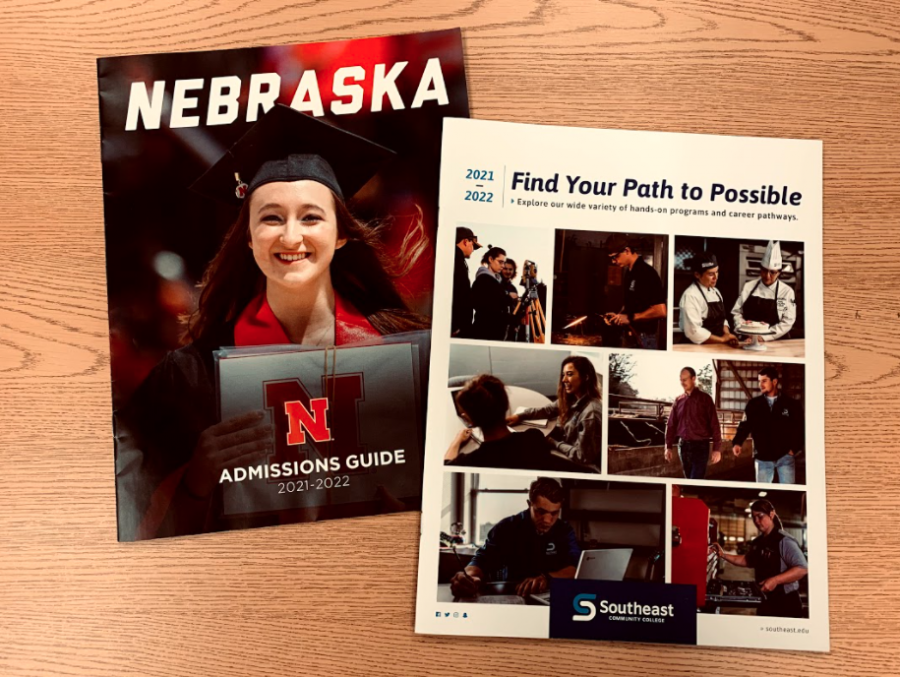How To Pick A College
September 24, 2021
Once a high schooler knows they want to attend college, one of the most important and most challenging tasks is picking which institution to go to. With so many great colleges to attend in the United States, there are so many options. It can feel overwhelming to even think about the future. This guide to picking a college should help narrow down your options.
Geographic Location
The first factor to consider when picking a college is probably the most obvious: geographic location. How far from home is the college? One advantage of going to school in your home state is that tuition (at public schools at least) is cheaper than going out of state. Weather is also a point to consider. If you prefer hot summers and mild winters, look at colleges in the southern U.S., and if you prefer mild summers and cold winters, colleges in the northern U.S. may be better for you. Consider whether the college is in a rural or urban area. Rural colleges will generally be smaller, focus more on agriculture and allow students to build intimate relationships with their peers and professors, while colleges in large cities will have many majors to choose from and more networking opportunities, like internships and job openings.
Academics
Another important aspect of a college is its academic caliber. Most importantly, does the college have the major you are considering or majors that interest you? Is the institution known for providing a rigorous academic curriculum? Students who are highly motivated by academic achievement and innovation usually gravitate towards more rigorous universities, like Ivy League schools. Students who are comfortable with a college experience similar to high school may do better at a community college. Is the college known for any particular department or program, or accredited by any licensing organizations? An example of this would be the University of Nebraska-Lincoln, which is accredited by the Higher Learning Commission, one of six regional accrediting agencies. Has the college won academic awards or published any groundbreaking publications?
Size
Size is one of the most obvious and important aspects of colleges to consider when deciding which ones to apply to. Small colleges generally have less than 3,000 students, many of which are liberal arts colleges. These institutions typically focus more on giving students a general knowledge of humanities rather than a specific major. Examples of humanities include ethnic studies, philosophy, art, english, languages, drama, music, and gender studies. According to U.S. News and World Report, liberal arts colleges aim to “teach their students to learn,” meaning they emphasize problem solving, deep analysis and critical thinking skills. These small colleges don’t offer as many programs but offer a lot of personalization of education, and offer closer student-professor relationships.
Large colleges are usually state or other public universities with more than 15,000 students. Large institutions are generally more diverse and offer more extracurricular activities. Because most public colleges are state universities, they receive taxpayer funding and usually have nicer, more updated facilities. They also offer more access to professional resources, like work-study opportunities, centers for career exploration and success and internships. Large colleges offer more active student life, like large football games, lots of clubs and Greek life.
Cost
Cost is almost always the central factor in every student’s college decision. The total cost of attendance, or COA, is found by adding tuition costs, room and board, meal plan, transportation, books and supplies and miscellaneous spending. Once again, going to a public college in your home state can be much cheaper because “in-state” tuition is generally less expensive than going to school out-of-state. Private colleges do not consider state of residence but are generally more expensive altogether. Financial aid from colleges can be based on demonstrated need, which depends on family income, assets, and tax history, or it can be based on academic performance, like high ACT/SAT scores, grade point average (GPA) and leadership experiences.
Research/Outcomes
If your main goal for college is academic achievement and innovation, schools with a reputation for rigorous academics, like Ivy League schools, or with extensive research opportunities will fit you best. Does the college have a career center? How does the college connect students with future employers? Also consider colleges’ job placement rates. What percentage of graduates secure a job within the first 5 years after graduation?
One helpful strategy to narrow down your options can be ranking these needs from most important to least important to you. Schools that accommodate your highest priority needs are most likely best for you. Once you have a list of schools that fit your needs, visit them. Check out their campus and make sure you enjoy the atmosphere and like facilities. Most importantly, START EARLY. EducationQuest offers many resources to help high school students narrow down careers, fill out the Federal Application For Student Aid (FAFSA) and apply to colleges.

